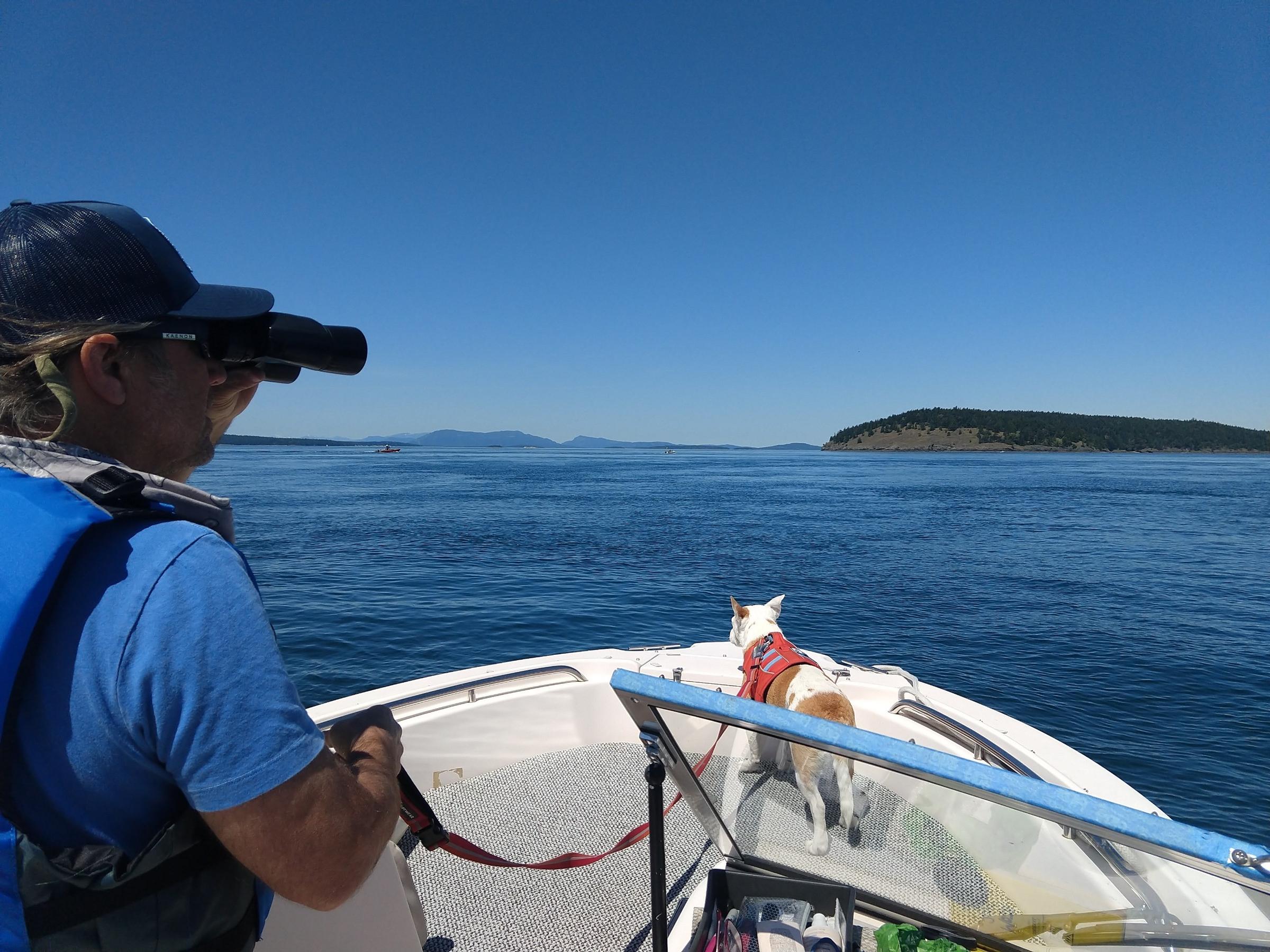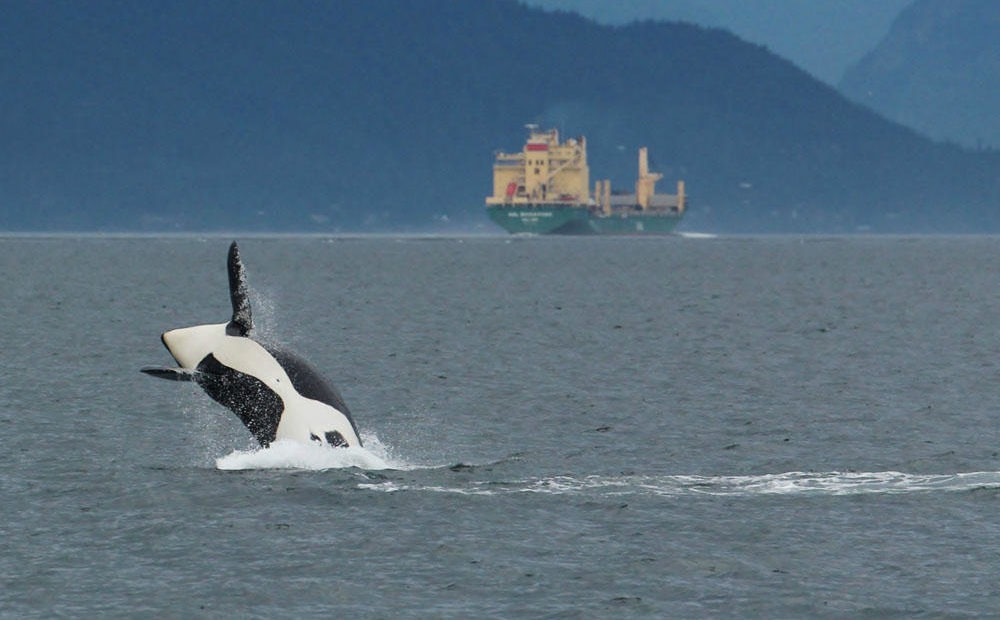
Pandemic Gives Pacific Northwest Whales A Respite From Din Of Underwater Noise
READ ON
American and Canadian marine scientists — and one talented dog — are seizing an unexpected opportunity presented by the coronavirus pandemic. They are trying to establish whether Pacific Northwest whales benefit from the current drop in boat traffic and underwater noise.
Stay-home edicts have significantly reduced recreational boat trips and ferry crossings this spring. Commercial whale watching tours and the cruise ship season remain on hold. Large cargo ships continue to come and go with slightly reduced frequency.
Noise and vessel disturbance are considered major factors in the decline of the Northwest’s endangered resident orcas alongside the other big factors of dwindling food supply — chiefly, chinook salmon — and toxic pollution.
“From a killer whale’s perspective, not having fast moving boats around like recreational boats… that might be quite beneficial,” said oceanographer Scott Veirs of Seattle, who coordinates an underwater microphone network called Orcasound.
The coronavirus-induced lull in marine traffic may be short-lived, meaning researchers have to act fast to document if the quieter seas make happier, healthier whales.
Multiple researchers who were interviewed described an ultimate objective to correlate whale health and behavior changes — for example, by measuring stress hormone levels — with separate datasets of underwater noise levels and boat densities on the surface. The fortunes of the critically-endangered Southern Resident killer whales have high priority, but transient orcas, gray whales, humpback whales and other baleen whales are of interest too.
Killer whale expert Deborah Giles ventured out into Haro Strait in recent days looking to scoop up floating poop left behind by any passing whales for multiple levels of analysis. She encountered the marine mammal-eating transient orcas, also called Bigg’s killer whales.
“Specifically right now, we’re interested in looking at stress levels,” Giles said in a brief interview as she was leaving Snug Harbor on San Juan Island, Washington, on Friday. “Hopefully, at some point being able to compare them with stress levels in fecal samples collected at other times of the year and possibly even next year to see whether or not this low-boat data is having an impact.”
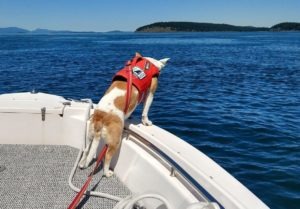
Eba, the whale dog, at work in Haro Strait on May 8. CREDIT: Deborah Giles / UW Center For Conservation Biology
A specially trained dog stood in the bow of Giles’ boat to help her locate whale scat for collection. Giles teaches at the University of Washington as well as serves as research director for the nonprofit Wild Orca.
Veirs said there is a bit of suspense in the research community about when the three pods of endangered Southern Resident orcas will arrive for their traditional late spring and summer residency in inland waters. J pod has made a couple of brief forays into the Salish Sea during late winter and this spring, but soon reverted to foraging out of sight off the Pacific Coast.
“We are all trying to remain ready,” Veirs said. “If the pandemic continues to affect vessel traffic in the Salish Sea for the next couple of months, we’ll have a very rare opportunity to observe killer whale activity when noise levels are reduced. I hope that happens.”
The population of resident killer whales in the shared border waters of the U.S. Pacific Northwest and southwestern British Columbia has dwindled to around 73 individuals.
The fish-eating orcas primarily use sound to hunt, orient and communicate. Buzzy, high pitched noise from small recreational boat engines can mask the clicks and chirps the killer whales make for echolocation of prey (also called biosonar).
Other larger whales that inhabit Northwest waters communicate over longer distances in a frequency band that overlaps with the rumbling, low frequency noise made by large container ships, tankers and bulk freighters.
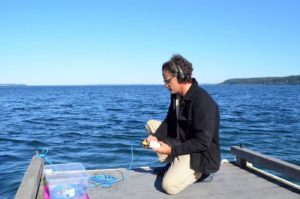
Oceanographer Scott Veirs sets up a hydrophone to listen to ships and orcas at Bush Point, Whidbey Island, in 2018. CREDIT: Eilis O’neill / KUOW Photo
The Olympia-based Cascadia Research Collective already had a study underway of a small group of gray whales that consistently takes a detour and extended break from the northbound migration to Alaska to feed on ghost shrimp in North Puget Sound — hence their nickname, the “Sounders.”
Senior biologist John Calambokidis said the Sounders would frequently cross paths with recreational fishermen, pleasure boats and a posse of commercial whale watching tours, pressures he said that were all greatly reduced this spring.
“It was a pretty dramatic change for the species we were studying there,” Calambokidis said in an interview.
Calambokidis and his collaborators from SR3 and Southall Environmental Associates are collecting blubber biopsies from the gray whales as well as flying a small drone overhead to collect breath samples and take body profile pictures. He said the onset of the pandemic lull made him realize it would be really important to look at stress hormone levels.
But Calambokidis then cautioned that food scarcity and other ills could also affect the stress hormone data.
“There are more factors in play than noise,” he said. “Nutritional stress is an important stressor.”
Canadian researchers are working on these questions too. The University of Victoria operates a network of cabled hydrophones under the Strait of Georgia and on the continental shelf west of Vancouver Island.
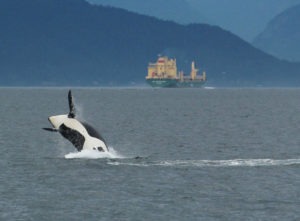
Underwater noise impacts on endangered orcas were already under study before the coronavirus pandemic opened the door for a natural experiment. CREDIT: Joan Lopez / ECHO
A quick-turnaround study accepted for publication soon in a scientific journal compared underwater noise levels captured by the real-time listening network in the frequency band where large cargo ships leave their mark. Study co-author David Barclay of Dalhousie University told the Canadian online news site The Narwhal that noise power dropped by roughly 25 percent during the first quarter of this year compared to the same period last year. He attributed the notable decrease to early coronavirus impacts on trade between Asia and the Port of Vancouver, Canada.
Vessel tracking data for the Columbia River and Puget Sound show much smaller decreases in marine traffic. John Veentjer, director of the Marine Exchange of Puget Sound, said commercial arrivals to U.S. ports on the Salish Sea were not down very much for the year through April. The total thus far in 2020 was 768 arrivals compared to 797 through the same time last year.
Veentjer said changes that stood out to his eye were the major reductions in ferry crossings and what is shaping up to look like a total cancellation of the 2020 Alaska cruise season, which involves port calls to Seattle, Victoria and Vancouver.
“If and when the Southern Residents return to the Salish Sea, I suspect they may not notice any subtle decrease we may be experiencing in (commercial) ship traffic,” said Veirs of Orcasound and the oceanographic consultancy Beam Reach. “But if we continue to not have any commercial whale watching and minimize our recreational boating, the killer whales would certainly experience less of an acoustic interaction with the small vessels.”
Related Stories:
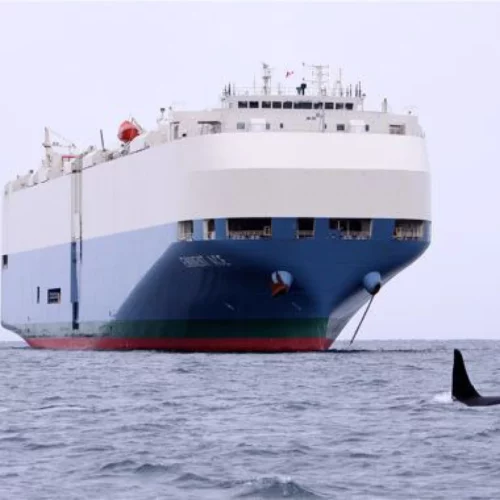
Reducing collisions between ships and whales? There’s apps for that, but they need work
Fortunately, it doesn’t happen very often in the Pacific Northwest that ships collide with whales. But when it does, it’s upsetting, tragic and the whale probably dies. Three separate teams have developed smartphone-based systems that can alert commercial mariners to watch out, slow down or change course when whales have been sighted nearby. A recent ride-along on a big container ship demonstrated that real-time whale alerts are still a work in progress.
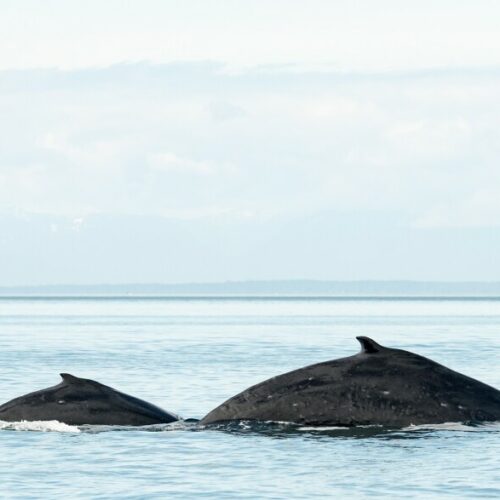
Record Numbers Of Bigg’s Killer Whale Sightings And Humpback Calves In Salish Sea
Whale watchers have spotted a record number of humpback calves in inland Pacific Northwest waters this season. There was also a record streak of Bigg’s killer whale sightings that just ended, according to a local whale research nonprofit. Those observations offer some good news to offset the ongoing concern about the survival of the Northwest’s iconic, but critically endangered resident orcas.
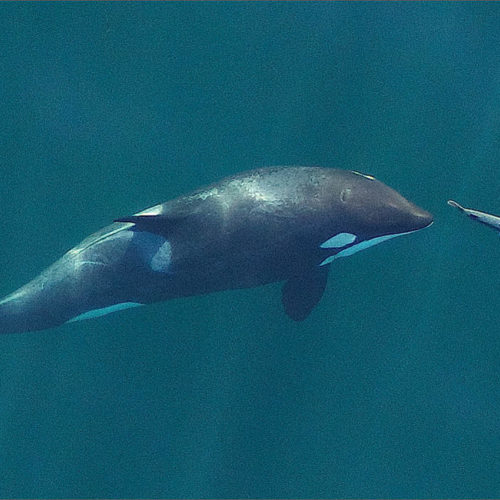
Study: Chinook Salmon Are Key To Northwest Orca Population All Year
By analyzing the DNA of orca feces as well as salmon scales and other remains after the whales have devoured the fish, the researchers demonstrated that the while the whales sometimes eat other species, including halibut, lingcod and steelhead, they depend most on Chinook. And they consumed the big salmon from a wide range of sources — from those that spawn in California’s Sacramento River all the way to the Taku River in northern British Columbia.

